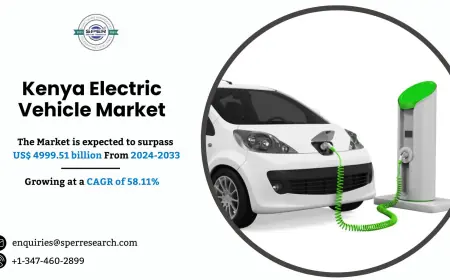How to Start with Medicine Delivery App Development?
Start your journey with medicine delivery app development in 2025. Learn key features, business models & why IMG Global Infotech is the right tech partner.

The demand for medicine delivery app development is growing rapidly. Patients now expect fast, safe, and convenient access to medications. From busy cities to remote areas, people prefer digital healthcare services. In 2025, this shift is stronger than ever. For startups and healthcare providers, building a reliable medicine delivery app is a necessity.
This guide gives you expert insights into app features, business models, monetization strategies, and the right development approach.
Why Businesses Are Investing in Medicine Delivery Apps in 2025
In 2025, healthcare is going digital. More people use mobile apps for doctor consultations, prescription refills, and ordering medicines. Medicine delivery apps USA usage is booming due to aging populations and busy lifestyles.
Businesses invest in these apps to stay competitive, improve patient engagement, and generate recurring revenue. With real-time tracking, secure prescription uploads, and personalized notifications, the user experience improves while reducing pharmacy workloads.
Business Models for Pharmacy Delivery Apps
Choosing the right business model is key for app success. Here are the most popular ones:
-
Single Pharmacy Model: A local pharmacy builds an app to serve nearby customers.
-
Aggregator Model: Multiple pharmacies list their products on a single platform.
-
Direct-to-Consumer (D2C): Pharmaceutical companies deliver their products directly.
-
Marketplace Model: A third-party platform connects pharmacies and users.
Each model fits different business sizes and goals. A skilled medicine delivery app development company can help choose the right fit.
How Can You Monetize Your Medicine Delivery App?
To make your app profitable, consider these proven revenue strategies:
4.1 Charging Delivery or Service Fees
Most apps charge a flat or dynamic fee based on distance or delivery time. This adds a steady income stream and supports logistics.
4.2 Offering Subscription Plans
Monthly or yearly subscription plans offer free delivery, priority support, or discounts. It builds user loyalty and ensures regular income.
4.3 Running In-App Advertisements
Partner with health brands and show non-intrusive ads. Targeted advertising generates revenue without harming user experience.
4.4 Promoting Vendors Within the App
Charge pharmacies or brands to highlight their products or services in top search results. Sponsored listings boost visibility and your profits.
4.5 Launching Membership Programs
Offer premium memberships with benefits like express delivery, access to telehealth, or cashback offers.
4.6 Providing Telemedicine Services
Combine medicine delivery with online doctor consultations. This adds more value and makes your on demand medicine delivery app development more useful to end users.
Key Features of a Successful Medicine Delivery App
User experience and compliance are vital. Here’s what your app should offer:
5.1 Features for Pharmacies
-
Prescription upload management
-
Inventory tracking
-
Order history and billing
-
Notifications for low stock or prescription expiry
5.2 Features for Couriers
-
Route optimization
-
Real-time delivery status
-
In-app communication with users
-
Electronic proof of delivery
5.3 Features for Customers
-
Easy search and order process
-
Upload prescriptions securely
-
Track delivery live
-
Multiple payment options
-
In-app support
Well-crafted features help you deliver trusted medicine delivery app development solutions that meet user expectations.
Technology Stack for Medicine Delivery App Development
A robust tech stack ensures performance, security, and scalability. Here’s a standard stack:
-
Frontend: React Native or Flutter
-
Backend: Node.js, Django, or Laravel
-
Database: MongoDB, PostgreSQL
-
Real-time Tracking: Google Maps API, Firebase
-
Payment Gateways: Stripe, Razorpay, PayPal
-
Cloud Hosting: AWS or Google Cloud
Choosing the right stack is crucial for scalable online medicine delivery app development company projects.
How to Start with Medicine Delivery App Development
Wondering how to start a pharmacy delivery service? Follow these steps:
-
Market Research: Study user needs, competitors, and regulations.
-
Choose a Business Model: Pick one that suits your pharmacy or startup.
-
Hire Experts: Partner with a company that specializes in medicine delivery app development.
-
Build MVP: Launch a minimum viable product with essential features.
-
Test & Improve: Collect user feedback and improve features.
-
Scale: Add premium services like subscriptions, telemedicine, and more.
Starting small and scaling smart is the secret to success.
Why Choose an Img Global Infotech for Medicine Delivery App Development?
IMG Global Infotech is a trusted medicine delivery app development company known for building secure, feature-rich apps. Here’s what sets them apart:
8.1 Proven Experience with Healthcare Regulations
They understand FDA, HIPAA, and GDPR compliance. This ensures your app follows legal standards.
8.2 Secure Prescription Management
Your app will support encrypted prescription uploads, helping users feel safe.
8.3 Real-time Order Tracking
IMG Global Infotech apps come with real-time GPS tracking, so customers always know their delivery status.
8.4 GDPR & HIPAA Compliance
Security and privacy are top priorities. IMG Global Infotech ensures your app handles sensitive health data responsibly.
Conclusion
A reliable medicine delivery app leads the future of digital healthcare. Demand is growing fast. With clear monetization strategies, 2025 offers big opportunities. Use the right tech stack. Pick a strong business model. Work with an expert team. You will launch a secure, scalable app that users trust.
IMG Global Infotech builds safe and user-friendly apps. Their team knows healthcare rules and delivers smooth, compliant solutions. They support both local pharmacies and startups.
Start your journey today. Partner with experts. Grow your presence in the digital health space.
What's Your Reaction?
 Like
0
Like
0
 Dislike
0
Dislike
0
 Love
0
Love
0
 Funny
0
Funny
0
 Angry
0
Angry
0
 Sad
0
Sad
0
 Wow
0
Wow
0


















































